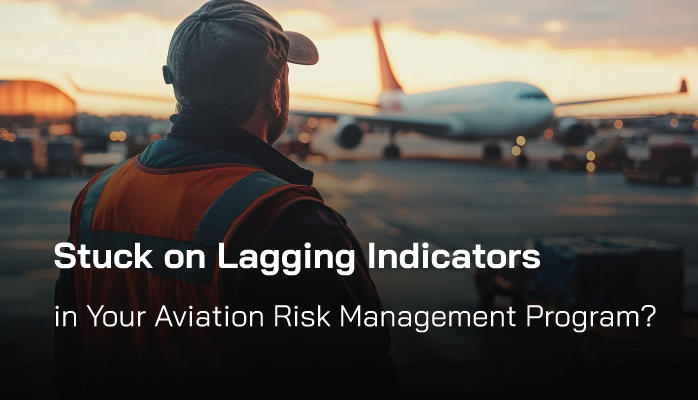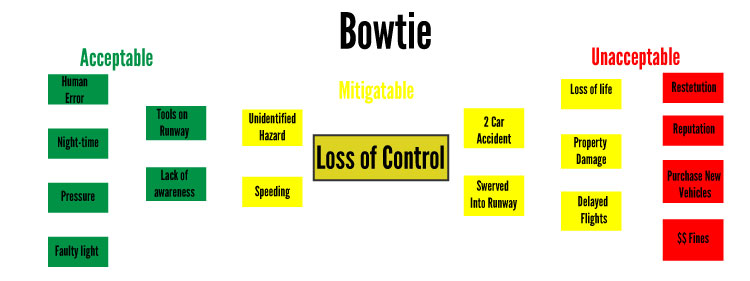Number One Asset in Aviation Risk Management Programs

People.
Superior safety performance in any aviation risk management program is always the result of putting the needs of employees first, and then supporting them with quality policies and procedures, and great aviation safety management system (SMS) tools.
Great aviation safety policy can give rise to quality lagging indicator controls (reactive controls to the safety event) through analysis of issues. But leading safety indicators – that is to say, proactive indicators – will ever only be worth as much as the employees behind the risk controls.
This is because, functionally, reactive lagging indicators can be influenced at a bureaucratic level whereas leading indicator controls will almost always be performed at the level of human action regardless of the bureaucracy behind such controls.
Have You Read
- Understand Aviation SMS KPIs Lagging and Leading Indicators
- 7 Best Aviation Lagging Indicators
- Safety Chart: Monitor Aviation SMS Performance With Leading Indicators
Thus, employees are the number one asset in your risk management program. When your aviation SMS' performance plateaus, stalls, or regresses despite the implementation of new safety policies or SMS tools, look no further than your aviation safety culture.
As you evaluate your safety culture, look for clues as to the root causes of poor SMS performance. A great place to start is by considering important SMS safety culture elements:
- Safety policy statement;
- Non-punitive reporting policy statement; and
- Safety communications.
Policy statements should afford employees protection from management for self-reporting errors and mistakes. Furthermore, the policy statement should indicate that SMS participation is not an optional, extra-curricular activity. SMS participation is required.
As you review safety communications, look at the frequency of newsletters and safety messages. How often are they sent out? What is the message? Are safety communications simply a report of safety activity? Or are they geared to educate and promote the SMS within the company?
Safety communications and safety policies are the primary tools to positively shape safety culture.
Example of Lagging and Leading Indicators in Risk Management Programs
Consider a safety event's entire risk management process, as represented by the Bowtie.
- Various causes align to produce events; which
- Culminate in the Safety Event; which
- Leads to the Impact(s) of the event.

Lagging indicator controls occur in the Detective and Remedial parts of a safety issue. Leading indicator controls occur very near if not before causes. Consider a situation before a flight where the deicer was able to breach the cabin before takeoff. Let’s consider two possible scenarios:
- The deicer operator is about to begin deicing but stops after noticing that the front hatch is not properly closed. The operator stops deicing – no harm done.
- Deicer operator begins deicing, deicer spray filters into the door, and flight attendants notice a slightly foggy mist in the cabin. They follow a mandatory emergency checklist procedure to make sure the plane is properly secured at any sign of smoke-like contamination – mitigating a potentially big safety issue.
In scenario #1, the positive safety culture – in this case safety awareness of the employee – prevented the possible cause of a safety event (open hatch) from going anywhere. It was mostly his/her actions that prevented causes from aligning to trigger the safety event. In the second scenario, a lagging control measure greatly helped mitigate the incident from further damage.
Have You Read
- 4 Things You Must Understand About Leading Indicators in Aviation Safety Management
- 8 Aviation Leading Indicators That Successful SMS Measure
- How to Use Leading Indicators in Aviation SMS
How to Understand Leading and Lagging Indicators in Aviation SMS

Another way to easily understand the difference between lagging and leading indicators is that lagging indicators reflect historical, quantifiable, “output” data, such as scenario #2, once the safety report is reported and managed. There would be discernible causes that led up to mist getting into the cabin, as well as the discernible bureaucracy that helped mitigate the concern. The key phrase in this scenario is proof of risk control performance.
Leading indicators are much harder to quantify because they begin and end at the “warning sign” stage of an event. If scenario #1 were to be reported, it would only be a “what if” in terms of projecting out the consequences of the event if the employee had not been aware of the open latch. The key phrase in this scenario is identification before the fact.
Unlike the second scenario, the first scenario:
- Is NOT proof of SMS performance – i.e., that the bureaucratic SMS processes work; but it
- Is proof of quality safety behavior and an indicator that the safety culture of the company can account for warning signs, weaknesses, and precursors before an event.
Why Your Aviation SMS Is Stuck on Lagging Indicators
The great benefit of scenario #1 is that once reported, the SMS process can incorporate a new risk control for that procedure (deicing plane). In this manner, we can understand leading risk controls as being created because of safety culture.
Without a positive safety culture, an aviation SMS may generate plenty of safety data because of quality lagging indicator controls – but they will see very little improvement in spite of all the data.
In our example, the SMS in scenario #2 may constantly see “yellow” or mitigate-risk safety issues. As an SMS' safety culture improves and employees prevent hazards from manifesting more “green” or acceptable-risk safety issues will be generated, and more mature SMS implementations may even see a dip in safety data volume as risks are avoided so far ahead of time that they are not even reportable – e.g. the flight attendant made sure to triple check the latch just to be “extra safe” (trust but verify).
All this to say that at a certain point, an aviation risk management program can only improve at the rate at which the safety culture improves:
- Better safety culture;
- More proactive safety behavior;
- Fewer risks that actually need to be mitigated because they are prevented.
That being said, the great benefit of lagging indicators is that they set the baseline level of safety.
Related Articles on Aviation SMS Risk Controls
- Difference Between Hazards, Risks & Control Measures in Aviation SMS
- What Is a Risk Control in Aviation SMS: Meaning, Purpose, Application
- How to Monitor the Effectiveness of Control Measures
Lagging and leading indicators may be among your KPIs. When was the last time you reviewed your KPIs?
Yes, SMS Pro has a Bowtie tool. Here are some short videos of SMS Pro's risk management software. If you need good SMS tools to manage regulatory compliance, learn how SMS Pro can help. SMS Pro has all the tools necessary for a fully compliant SMS.
Last updated December 2024.








